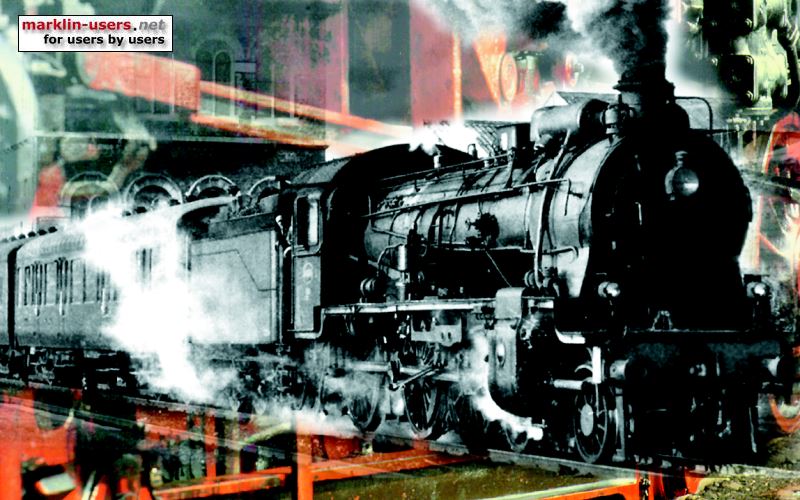So, what's this about then? The best
way is to ask yourself if you have seen any shiny brick buildings
lately.. Or have you seen a loco or wagon that looks glossy and
brand-new as most models are? Have you seen railway track that has
this silvery or brass-like shiny finish a week after they are laid? Is
the track ballast really shiny as grey plastic? Our goal with this
article series is to inspire you to make you layout look more realistic
if you wish to do so. The procedure is known as
"weathering".
This article series is aimed at the beginner, but also those who have
tried it before can maybe get some useful tips & tricks. This article
series is contributed by Kevin Brady,
famous for making things dirty in the Colonial chapter of ETE.
Here is a sample from his ETE module..

Introduction
Weathering is a subject that many model railroaders steer away from.
Fact is it's easier that you think and is a lot of fun! If you can wire
a turnout, build a kit, adjust a slider you can weather.
Using the right tools and a variety of materials, we can give our model
the 'real world' we are after.
Before we start to do any weathering, we should try to understand the
"whys" of weathering. It may seem obvious, but the elements
cause weathering to occur on objects. Temperature, sunlight, water, all
cause different materials to fail and fade. The sun fades paint, water
causes metal to rust and moves dirt. If you can explain to yourself why
you applied a weathering treatment to a model your results will be much
more realistic.
Here are some examples
If you apply a rust color to the front of the cylinders of a steam
locomotive, it's because of a leak that rusted the metal (German locs
where notorious for this). You add some white paint to your base color
to lighten it, it's to show that it's faded. You apply a dark wash to a
structure you are showing a build up of dirt.
Should I make everything
"dirty" ?
Weathering also to a certain degree is influenced by era and location
you are modeling. If you are modeling era 1 you might not want to
dirty up that loco, that was not only new but cleaned regularly. The
same can be said of a modern Swiss layout where even the catenary looks
likes it's been cleaned! Also don't weather everything the same. Take a
look at a prototype photo of a string of boxcars. Some roofs and sides
are very dirty, others not. The bogies on one are very rusted, not
another. One is splattered with mud, paint is peeling off another. A
structure in a Bw is covered with soot, a house in the middle of town?
Get the idea?
More sessions will follow as soon as Kevin
gets the time to complete them...
|


